
Station Name: CLIFTON JUNCTION (Bury line platforms)[Source:
Paul Wright & Alan Young]
junction_old1.jpg) Looking south at Clifton Junction station c. 1910. The picture is looking along driveway which led to the main station building (and under the platforms on to Clifton Hall) which was behind the trees in the centre left of the picture. To the right can be seen the platforms that served the Manchester and Bolton line. In the bottom left a line can be seen which passes beneath the Manchester and Bolton route. This line ran to Eccles and provided a link between the Accrington line and the Liverpool and Manchester Railway. Above it can be seen the platforms that served the Accrington line. To the left of the picture out of view the Eccles line would have joined with the Accrington route. The signalbox on the left is Molyneux Junction aqnd that on the right is Clifton Junction.
Photo from John Mann collection  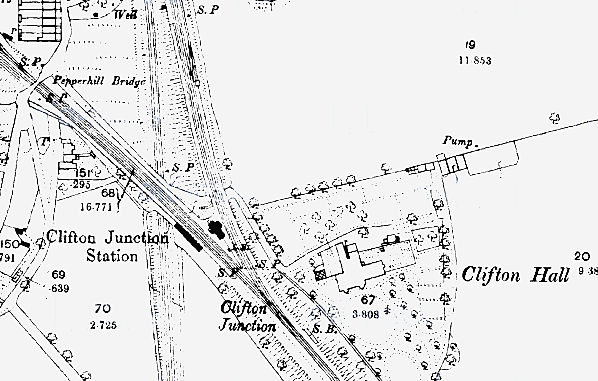
junction_old2.jpg)
Looking southeast at Clifton Junction station in April 1961. The platform to the right served trains travelling towards Bolton from Manchester. To the left is the Manchester platform. Further left can be seen the platforms that served the Accrington line. The down Accrington platform joined the up LYR platform at the south end of the station. In the triangle created by these platforms was the station's main building. In the distance can be seen a footbridge which linked all of the platforms. This was not there when the station opened but was added towards the end of the 19th century. The signalbox that controlled the junction can be seen far left.
Copyright photo by H C Casserley junction_old3.jpg)
This photograph was taken during the Rossendale Forester Railtour on 3 December 1966, the last day of service on the line. The train, hauled by Ivatt 46437, had to run round and remarshalled with assisting engine 42644 joining at Clifton Junction. The train had arrived from the Bolton direction and then travelled towards Radcliffe Bridge on the original East Lancashire Railway mainline. The ivatt has run ahead on to the Radcliffe line and is awaiting 42644 and train to complete their shunt.
Copyright photo from Richard S Greenwood 25.jpg)
In April 1974 the original ticket office serving both lines was still in use at the south end of the station. It would appear from the sign that the ladies room has been taken out of use. The
lighting dates from c.1950s. Photo by Alan Young 26.jpg)
Looking southeast towards the junction from the southern end of the Accrington line down
platform in April 1984. The Pepper Hill signalbox up section-signal Photo by Paul Williams 1.jpg) Looking north at Clifton Junction station in July 1985 seen from a passing Bolton train. The main station building seen in the picture above has now been demolished although the brick shelter is still there. Further to its right and in the trees on the right the Accrington route platforms are extant although heavily overgrown. The platforms have now been shortened and this section of
platform has been demolished. Photo by Alan Young 2.jpg)
Looking northwest along the up platform of the Manchester and Bolton route at Clifton Junction station in May 1989. A train can be seen heading northwards through the station. By this date the station had been reduced to a simple halt with bus shelters replacing the original waiting shelters. The original cobbled access road can be seen on the right.
Photo by Whatlep, reproduced from Geograph under Creative Commons Licence 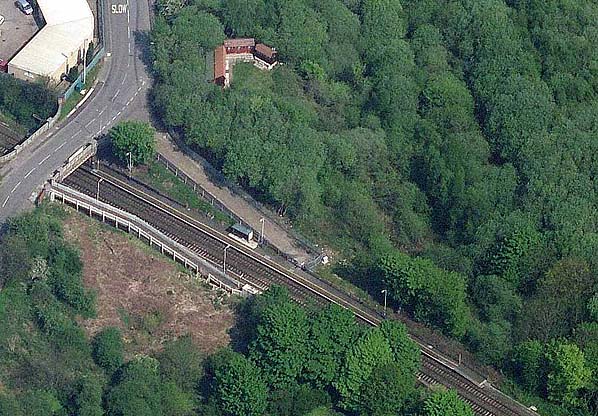 An aerial view of the much reduced facilities at Clifton station. The platforms in the picture serve the Manchester and Bolton line and have been shortened. To the right of the picture in the dense woodland the platforms that had served the Accrington route were extant in November 2010. The original cobbled access road is clearly visible although now truncated.
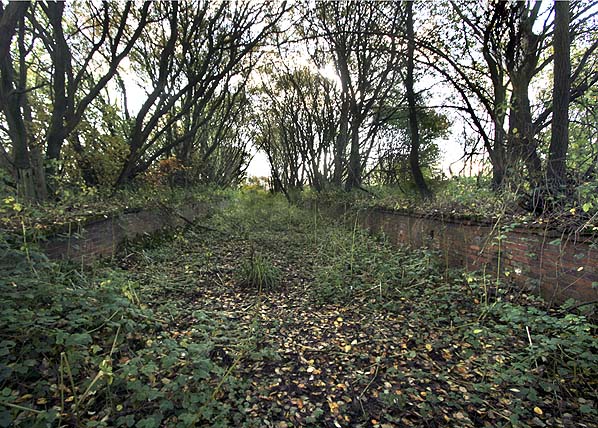
Clifton Junction station looking south towards the junction in November 2010. Both platforms are intact and overgrown
Photo by Nick Catford 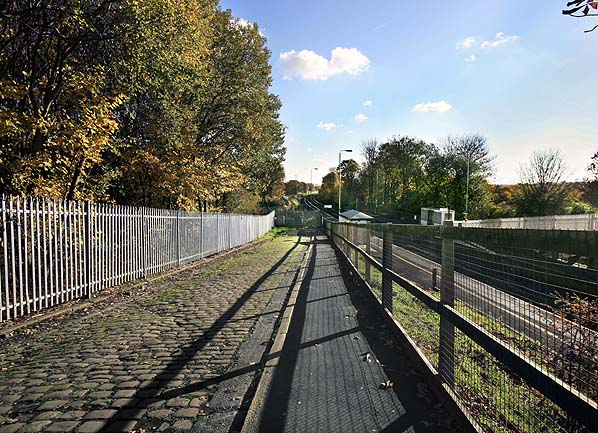 The original cobbled access road from Rake Lane in November 2011. This is still used for acces to the up platform on the Manchester to Bolton line. Beyond the bus shelter the cobbled road has been removedm it used to continue to the main station building close to the junction and also went under the Acrington line platforms to serve Clifton Hall.
Photo by Nick Catford 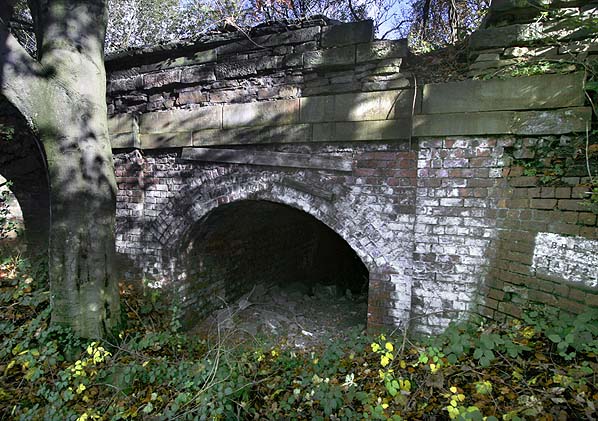 This is the back of the Accrington line down platform in November 2010. The continuation of the access road went under the platforms to serve Clifton Hall on the far side of the line. Before the footbridge was built in the late 19th century this also probably acted as a pedestrian subway for passengerrs using the up platform. The tunnel is now blocked on the north side.
Photo by Nick Catford
|





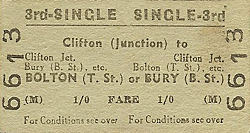

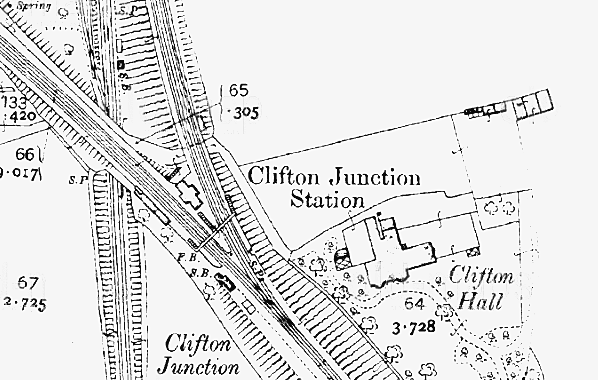


















 Home Page
Home Page